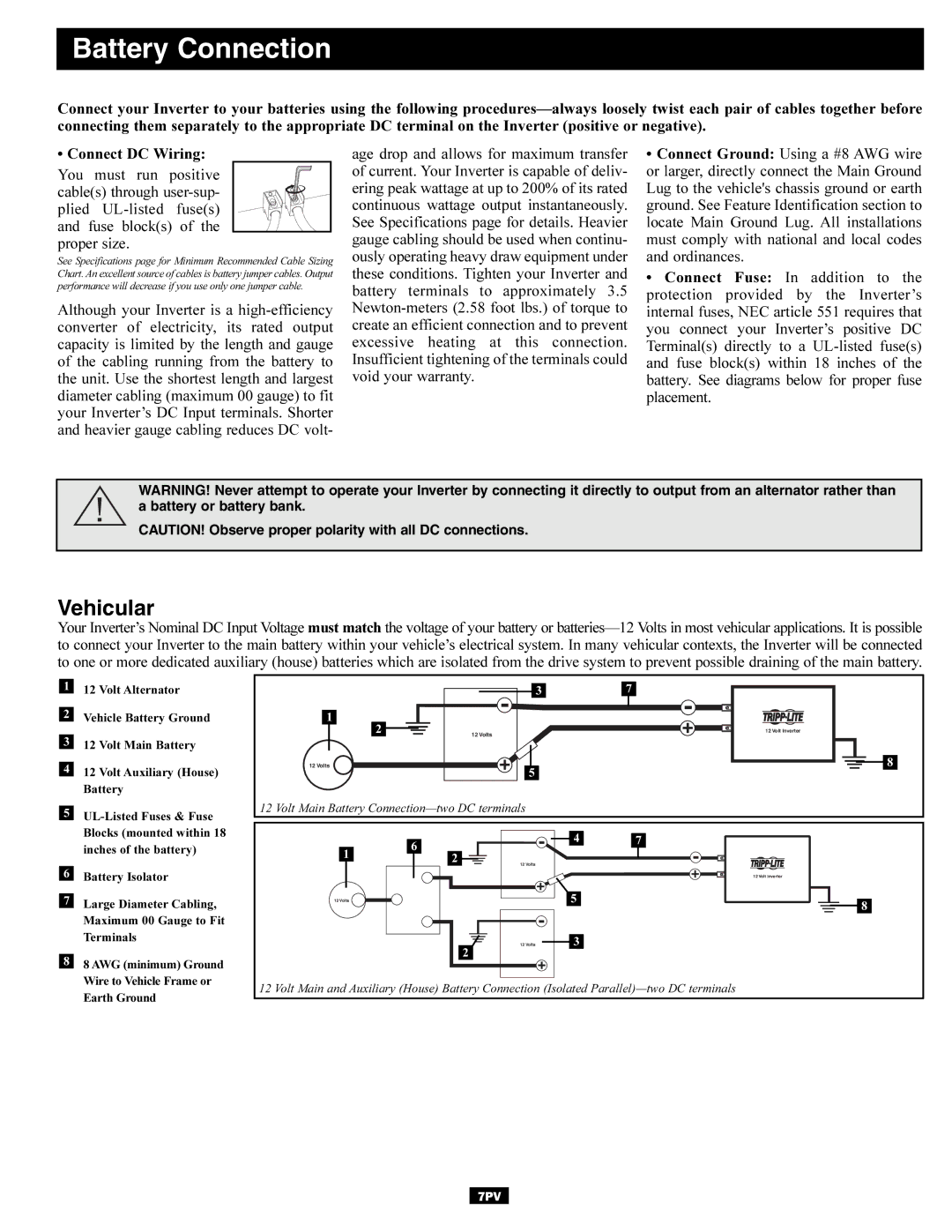
Battery Connection
Connect your Inverter to your batteries using the following
• Connect DC Wiring:
You must run positive cable(s) through
See Specifications page for Minimum Recommended Cable Sizing Chart. An excellent source of cables is battery jumper cables. Output performance will decrease if you use only one jumper cable.
Although your Inverter is a
age drop and allows for maximum transfer of current. Your Inverter is capable of deliv- ering peak wattage at up to 200% of its rated continuous wattage output instantaneously. See Specifications page for details. Heavier gauge cabling should be used when continu- ously operating heavy draw equipment under these conditions. Tighten your Inverter and battery terminals to approximately 3.5
•Connect Ground: Using a #8 AWG wire or larger, directly connect the Main Ground Lug to the vehicle's chassis ground or earth ground. See Feature Identification section to locate Main Ground Lug. All installations must comply with national and local codes and ordinances.
•Connect Fuse: In addition to the protection provided by the Inverter’s internal fuses, NEC article 551 requires that you connect your Inverter’s positive DC Terminal(s) directly to a
WARNING! Never attempt to operate your Inverter by connecting it directly to output from an alternator rather than a battery or battery bank.
CAUTION! Observe proper polarity with all DC connections.
Vehicular
Your Inverter’s Nominal DC Input Voltage must match the voltage of your battery or
112 Volt Alternator
2Vehicle Battery Ground
312 Volt Main Battery
412 Volt Auxiliary (House) Battery
5
6Battery Isolator
7Large Diameter Cabling, Maximum 00 Gauge to Fit Terminals
88 AWG (minimum) Ground Wire to Vehicle Frame or Earth Ground
| 3 | 7 |
1 |
|
|
| 2 | 12 Volt Inverter |
| 12 Volts |
|
12 Volts | 5 | 8 |
|
| |
12 Volt Main Battery |
| |
| 4 | 7 |
1 | 6 |
|
2 |
| |
12 Volts
12 Volt Inverter
12 Volts | 5 | 8 |
|
|
12 Volts | 3 |
2 |
|
12 Volt Main and Auxiliary (House) Battery Connection (Isolated
7PV
